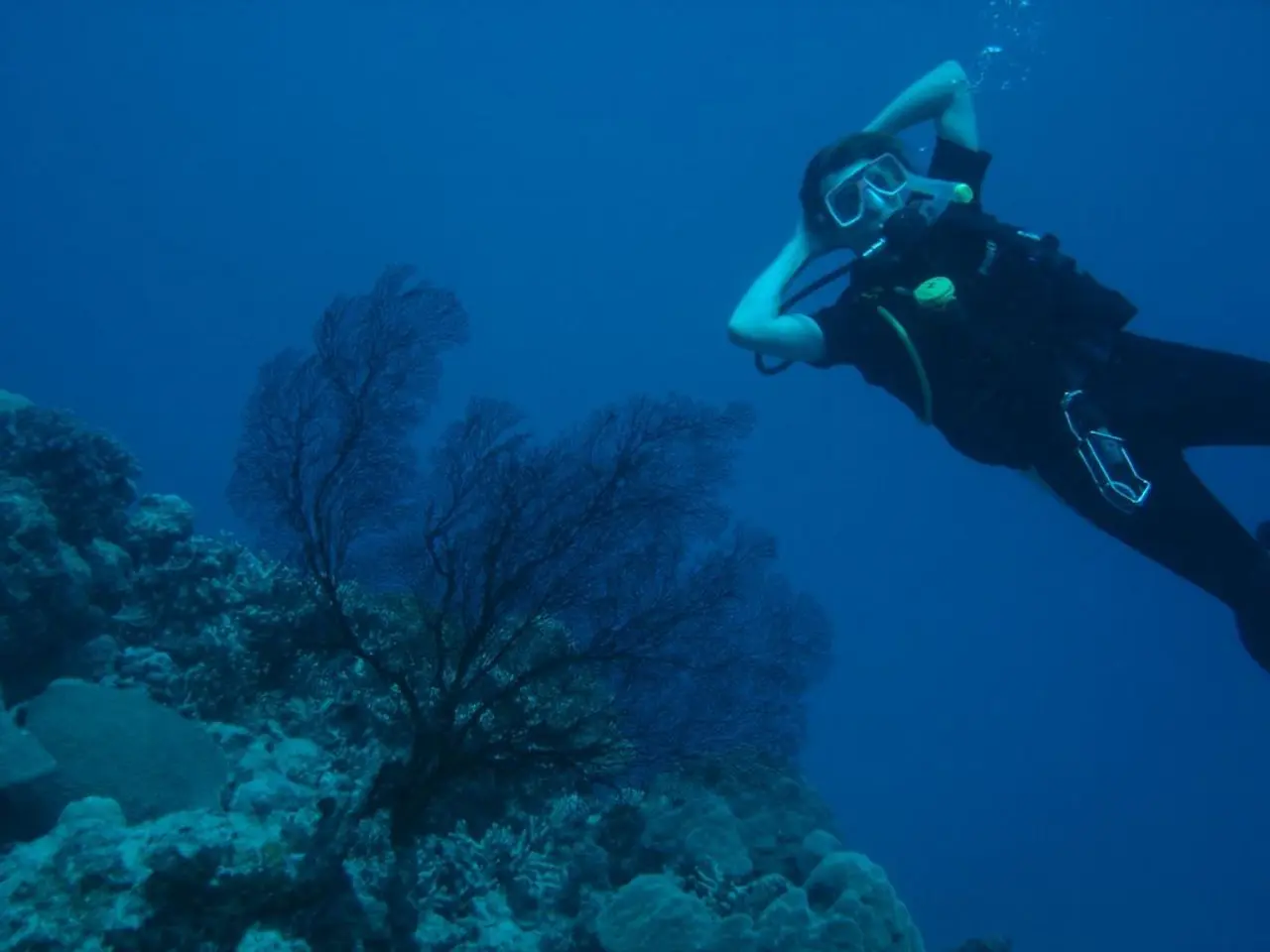Vivid occurrence restores vibrancy to Australia's parched outback, garnering interest from wild creatures and travelers alike.
The Great Flood of the Outback:
Step into a dreamscape as satellite images reveal a breathtaking transformation – the heart of Australia's desert pulse with life, a miracle born from the heavens.
In the parched expanse of the Australian outback, it appears as swirling pools of vibrant blue and green, stretching across hundreds of miles. This is no ordinary seascape, but Kati Thanda-Lake Eyre, a massive ephemeral lake, transformed from a barren, cracked salt pan into an inland sea by an unprecedented flood event.
Rare as a shooting star, the flood is breathing new life into this thirsty land, enticing mammals, birds and tourists to witness this remarkable spectacle.
"Spectacular" says Richard Kingsford, an ecologist at the University of New South Wales. "It's more than words could ever convey... Water birds, the flowing rivers through a desert wasteland, the fish swimming in the lakes, and after months, carpets of wildflowers covering the desert floor."
Perhaps surprisingly, Kati Thanda-Lake Eyre receives an average of only 5.5 inches of rain a year and can be thought of as a desolate salt pan in the South Australian desert. However, after an intense rainfall event in late 2025, the floodwaters carrying nutrients and life have conquered the parched wilderness.
Remarkably, the last major flood of Kati Thanda-Lake Eyre took place in 1974. This flood, which filled the lake to capacity for the third time on record, served as a benchmark until now. While smaller-scale events have been recorded in recent years, the floodwaters of 2025 are on track to be unprecedented.
An Oasis for Tourism
The life-giving waters of Kati Thanda-Lake Eyre are fed by two main sources: the Georgina-Diamantina River in the north, which started filling the lake in early May, and the Cooper Creek system. The waters brought by Cooper Creek, named somewhat ironically by early British explorer Charles Sturt as it can be up to 80 kilometers wide during a flood, have yet to reach Kati Thanda-Lake Eyre, but when they do, the desert ecosystem will be on the brink of a pulse-pounding boom.
During this boom, shrimps, crustaceans and fish will spawn, fish populations will explode, and mammals such as the endangered Crest-tailed Mulgara and the Dusky Hopping Mouse will have their chance to propagate. The land will teem with birds like pelicans, stilts, and even visitors from as far away as China and Japan, drawn by the temporary abundance of water. Flowers will bloom across the desert floor, turning the once dry and arid landscape into a vibrant, colorful tapestry.
This year's flood is expected to bring in a massive tourism boom, as people from around the world flock to witness this incredible natural event. However, with increased visitor activity, challenges emerge, such as the need for better signage to ensure fragile ecosystems are protected, and increased support for the Arabana people who consider the lake sacred.
A Remote Paradise Preserved
Remote, pristine, and untouched, Kati Thanda-Lake Eyre remains largely unspoiled by human interference. The enormous distances between the outback town of Marree and the lake, which is only accessible by long, rugged treks through the desert or flight on propeller planes, help keep the lake and its surroundings free from development and pollution.
Conservationists, like Annemarie van Doorn and Luke Playford, actively protect this fragile ecosystem, monitoring the health of the wildlife and ensuring that populations of invasive species such as wild boar and camels don't overrun the delicate balance. Together, they manage the Kalamurina Wildlife Sanctuary, a 679,667-hectare property owned by the Australian Wildlife Conservancy, and can only truly understand the scale of their world from the helicopter they use for their conservation work. It's a world so vast that it can only be compared to Delaware in size.
For conservationists, ecologists, and tourists alike, Kati Thanda-Lake Eyre represents a unique opportunity to witness the raw, unfiltered power of nature. A symbol of hope and optimism in the face of environmental challenges and climate change, the lake's natural rhythms remind us that there is beauty to be found in the desert, and that despite our best efforts to disturb it, Mother Nature will always find a way to surprise us.
- Kati Thanda-Lake Eyre's transformation from a barren salt pan into an inland sea due to the Great Flood is attracting not just wildlife, but also tourists eager to witness this environmental-science phenomenon, making it an oasis for tourism.
- As the floodwaters carry nutrients and life, they are influencing various aspects of the outback's lifestyle, as fish populations explode, mammals have opportunities for reproduction, and even international visitors are attracted by the vibrant tapestry created by the wildflowers.
- While the floodwaters of 2025 are providing a temporary change in Kati Thanda-Lake Eyre's climate-change-influenced landscapes, it also adds to the pressing concerns of conservationists who strive to maintain the pristine, remote paradise in the face of increased tourism and ensure the minimal intervention of human activities disrupts the delicate balance of the environmental-science ecosystem.





